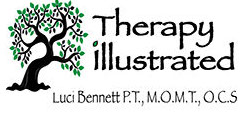


Bibliography

Andarawis-Puri N., Flatow E.L. “Tendon Fatigue in Response to Mechanical Loading.” J Musculoskelet Neuronal Interact 2011;11(2):106-114.
Basmajian, John. Primary Anatomy. Champaign: Stipes Publishing, 1970.
Birch, Helen. “Tendon Matrix Composition and Turnover in Relation to Functional Requirements.” Int J Exp Pathol 2007 August; 88(4):241-248.
Bogduk, Nikolai. Clinical and Radiological Anatomy of the Lumbar Spine Fifth Edition. Edinburgh: Churchill Livingstone, 2012.
Brown, Mark et al. “Measurement of Cadaver Lumbar Spine Motion Segment Stiffness.” Spine 2002;27(9):918-922.
Chatzitheodorou D., et al. “A Pilot Study of the Effects of High Intensity Aerobic Exercise VS Passive Intervention on Pain, Disability, Psychological Strain, and Srum Cortisol Concentrations on People With Chronic Low Back Pain.” Physical Therapy March 2007; 87(3)304-312.
Cholewicki, Jacek, et al. “Delayed Trunk Muscle Reflex Responses Increase the Risk of Low Back Injuries.” Soine 2005; 30(23):2614-2620.
Daele U.V. et al. “Differences in Balance Strategies Between Nonspecific Chronic Low Back Pain Patients and Healthy Control Subjects During Unstable Sitting.” Spine 2009; 34(11):1233-1238.
Doschak, M.R., Zernicke R.F.”Structure, Function and Adaptation of Bone-Tendon and Bone-Ligament Complexes.” Musculoskelet Neuronal Interact 2005; 5(1):35-40.
Duncker, Dirk and Bache, Robert. “Regulation of Coronary Blood Flow During Exercise.” Physiol Rev July 2008;88 (3):1009-1086.
El-Rich, Marwan et al. “Muscle Activity, Internal Loads, and Stability of the Human Spine in Standing Postures: Combined Model and In Vivo Studies.”Spine 2004; 29(23):2633-2642.
Girbes, E. et al. “Pain Treatment for Patients With Osteoarthritis and Central Sensitization.” Physical Therapy June 2013; 93(6):842-851.
Granata, Kevin and Marras, William. “Cost Benefit of Muscle Cocontraction in Protecting Against Spinal Instability.” Spine 2000; 25(11):1398-1404.
Grimsby, O. and Rivard, J. Science, Theory, and Clinical Application in Orthopaedic Manual Physical Therapy, Volume One and Three. Taylorsville: The Academy of Graduate Physical Therapy, Inc. 2008.
Heinemeier, K.M.,Kjaer, Michael, “In Vivo Investigation of Tendon Responses to Mechanical Loading.” J Musculoskelet Neuronal Interact 2011; 11(2):115-123
Hodges, P., Cholewicki J., and Van Dieen J.H. Spinal Control: The Rehabilitation of Back Pain. Edinburg:Churchill Livingston, 2013.
Kapandji, I.A. The Physiology of the Joints, Volume Three, Second Edition. Edinburgh: Churchill Livingstone, 1974.
Kavcic, Natasa et al. “Determining the Stabilizing Role of Individual Torso Muscles During Rehabilitation Exercises.” Spine 2004; 29(11):1254-1265.
Kirkaldy-Willis,W.H. et al. “A More Precise Diagnosis for Low Back Pain.” Spine 1979; 4(2):102-109.
Kirkaldy-Willis, W.H., and Bernard, T. Managing Low Back Pain Fourth Edition. Edinburgh: Churchill Livingstone, 1999.
Kjaer, Michael, et al. “Extracellular Matrix Adaptation of Tendon and Skeletal Muscle to Exercise.” J Anat. 2006 April; 208(4):445-450.
Kjaer,Michael, et al. “Metabolic Activity and Collagen Turnover in Human Tendon in Response to Physical Activity.” J Musculoskelet Neuronal Interact 2005; 5(1):41-52.
Kjaer, Michael. “The Role of Extracellular Matrix in Adaptation of Tendon and Skeletal Muscle to Mechanical Loading.” Physiol Rev April 2004; 84(2):649-698.
Lee, Diane. The Pelvic Girdle, Forth Edition. Edinburgh: Churchill Livingstone, 2011.
Lephart, Scott and Freddie Fu. Proprioception and Neuromuscular Control in Joint Stability. Champaign: Human Kinetics, 2000.
Magee, David. Orthopedic Physical Assessment Fourth Edition. Philadelphia, Pennsylvania: Saunders, 2002.
McGill, Stuart. Low Back Disorders: Evidence Based Prevention and Rehabilitation. Champaign: Human Kinetics, 2002.
Meadows, James. Orthopedic Differential Diagnosis in Physical Therapy: A Case Study Approach. New York: McGraw-Hill 1999.
Mok, Nicola, et al. “Changes in Lumbar Movement in People with Low Back Pain are Related to Compromised Balance.” Spine 2010; 36(1):45-52.
Mok,Nicola et al. “Failure to use Movement in Postural Strategies Leads to Increased Spinal Displacement in Low Back Pain.”Spine 2007; 32(19):37-43.
Richardson, C., Hodges P, and Hides J. Therapeutic Exercise for Lumbopelvic Stabilization. Edinburgh: Churchill Livingstone, 2004.
Sahrmann, Shirley. Diagnosis and Treatment of Movement Impairment Syndromes. St. Louis: Moseby, 2002.
Schuenke M., Schulte E., and Schumacher U. Thieme Atlas of Anatomy: General Anatomy and Musculoskeletal System. Stuttgart: Thieme 2010.
Seene, Teet and Kaasik, Prit. “Role of Exercise Therapy in Prevention of Decline in Aging Muscle Glucocorticoid Myopathy and Unloading.” J Aging Res. 2012; 2012:172492.
Shumway-Cook, A. and Woollacott M. Motor Control: Translating Research into Clinical Practice Fourth Edition. Philadelphia, J.B. Lippincott Company, 2012.
Sigmundsson, Freyr, et al. “Correlation Between Disability and MRI Findings in Lumbar Spinal Stenosis.” Acta Orthopaedica 2011; 82 (2):204-210.
Southern, Edward et al. “Disc Degeneration: A Human Cadaveric Study Correlating Magnetic Resonance Imaging and Quanitative Discomanometry.” Spine 2000; 25(17):2171-2175.
Szpalski M. and Gunzburg R. The Failed Spine. Philadelphia, J.B. Lippincott Company, 2005.
Thomas, James et al. “The Effect of Chronic Low Back Pain on Trunk Muscle Activations in Target Reaching Movements with Various Loads.” Spine 2007;32(26):801-808.
Thomopoulos, S., et al. “The Development and Morphogenesis of the tendon to bone insertion- What development can teach us about healing.”J Musculoskelet Neuronal Interact 2010; 10(1): 35-45.
Thornton, G.M., and Hart, D.A. “The Interface of Mechanical Loading and Biological Variables as they Pertain to the Development of Tendinosis.” J Musculoskelet Neuronal Interact 2011; 11(2):94-105.
Van Wingerden, Jan-Paul et al. “Differences in Standing and Forward Bending in Women with Chronic Low Back Pain or Pelvic Girdle Pain.” Spine 2008; 33(11):33-341.
Vleeming A, Mooney M., Dorman T., Snijders C., Stoeckart R. Movement, Stability, and Low Back Pain, The Essentail Role of the Pelvis. Edinburgh: Churchill Livingstone, 1997.
Vogel, K.G.”What Happens When Tendons Bend and Twist? Proteogycans.” J Musculoskelet Neuron Interact 2004; 4(2):202-203.
White, Augustus and Manohar Panjabi. Clinical Biomechanics of the Spine, Second Edition. Philadelphia, J.B. Lippincott Company, 1990.
Yoon J.H., Halper J. “Tendon Proteoglycans: Biochemistry and Function.” Musculoskelet Neuronal Interact 2005; 5(1) 22-34.
Zhang, G., et al. “Development of Tendon Structure and Function: Regulation of Collagen Fibrillogenesis.” J Musculoskelet Neuraonal Interact 2005; 5(1):5-21.
The contents of BackPainExplained web site including the text, graphics, images, and other material are for informational purposes only. The content of this web site is not intended to be a substitute for professional medical advice, diagnosis, or treatment. Always seek advice of your physician or other qualified health professional with questions you may have regarding a medical condition. Do not delay seeking medical advice or disregard professional treatment advice because of something that you have read on BackPainExplained.
Call your physician or 911 if you think that you have a medical emergency. Reliance on any information within BackPainExplained web site is solely at your own risk.